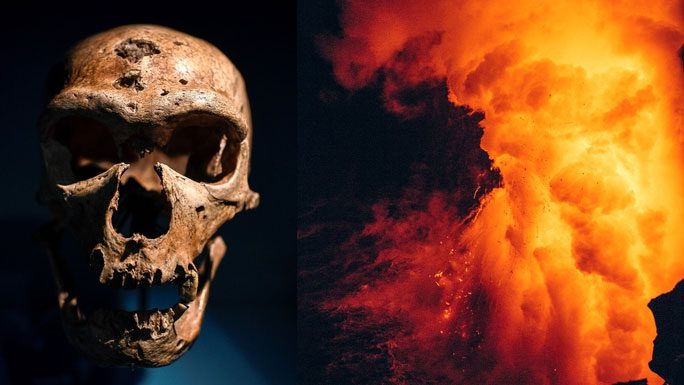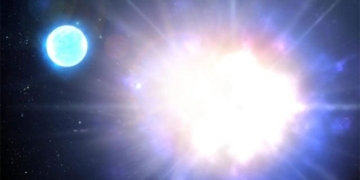The Neanderthals, our close relatives to Homo sapiens, with their “superhuman” physique and skills, mysteriously vanished around 40,000 years ago.
The Surprising Extinction of Neanderthals is a puzzle that numerous research groups around the world have been trying to solve in recent years. A new study led by Professor Benjamin Black from Rutgers University (USA) has proposed a plausible scenario.
It suggests that the “killer” Campi Flegrei, a supervolcano near Naples, Italy, has been proven by geologists to have a terrifying history of activity.

Neanderthals could have faced tragedy due to the simultaneous impact of the supervolcano and our own ancestors – (Graphic: Stephane De Sakutin).
In the latest evidence, this mountain, which spans a radius of 12-15km in Southern Italy, reveals that it once produced a catastrophic eruption about 40,000 years ago, according to Live Science.
This timing coincides with the period when paleoanthropologists estimate that the Neanderthals and continental Europe were the main habitats of this ancient human species.
Located near Mount Vesuvius, which caused the Pompeii disaster nearly 2,000 years ago and is showing signs of reactivation, Campi Flegrei is also a cause for concern for modern humans.
Thus, it represents a calamity too great for ancient humans to cope with. Notably, the eruption 40,000 years ago is identified as the most catastrophic volcanic eruption in Europe in the last 200,000 years and one of the largest explosions since humans first appeared on Earth.
Professor Black and his colleagues’ models indicate that temperatures would drop by 2 to 4 degrees Celsius in Europe in the year following the Campi Flegrei eruption, sufficient to trigger a mini ice age—but abruptly and severely enough to lead to disastrous consequences.
Although Neanderthal communities were not close enough to suffer the direct disaster, climate change from the indirect disaster could have severely harmed them in the context of competing for resources with the rapidly evolving and expanding Homo sapiens.
Commenting on the research, many scientists believe it is premature to claim that Campi Flegrei was the direct killer of the Neanderthals, but it could have contributed as a precursor that pushed them to the brink of extinction.
Recent archaeological evidence shows that Neanderthals were a species with superior physical capabilities and hunting skills compared to our Homo sapiens.
They also developed some fiber weaving skills and created better tools than our direct ancestors during the same period.
Although interbreeding was quite common, the two communities still had a certain level of competition, especially as the environment became less hospitable.
Neanderthals were also omnivorous but not as diverse in their diet as Homo sapiens, due to their “athletic” build and high protein needs.
They also lagged behind Homo sapiens in some skills related to social organization and adaptation, making them more vulnerable to the combined threats of natural disasters and competition from the species dubbed “Wise Humans.”
Therefore, Campi Flegrei could very well be the “killer” that initiated the tragedy for this “superhuman” relative.


















































